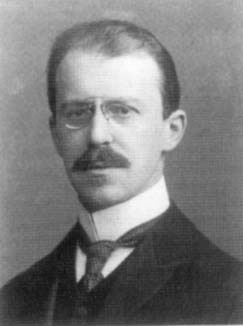But Schur's inequality is really a very magical and helpful inequality that if we are sufficiently familiarized with it for the special cases when $t=1$ and $t=2$, then we could use this "weapon" to tackle for lots of hard inequality IMO/competition problems.
Schur's inequality says:
For non-negative real numbers $a,\,b,\,c$ and a positive number $t$,
$$a^t(a−b)(a−c)+b^t(b−c)(b−a)+c^t(c−a)(c−b)≥0$$
The equality holds in two cases:
1. $a=b=c$ or
2. One of them is $0$, while the other two are equal.
Special cases:
When $t=1$, Schur's inequality can be rearranged to become:
[MATH]\color{yellow}\bbox[5px,purple]{\begin{align*}a^3+b^3+c^3+3abc&\ge a^2(b+c)+b^2(a+c)+c^2(a+b)\\&\ge ab(a+b)+bc(b+c)+ca(c+a)\end{align*}}[/MATH]
When $t=2$, Schur's inequality can be rearranged to become:
[MATH]\color{yellow}\bbox[5px,blue]{\begin{align*}a^4+b^4+c^4+abc(a+b+c)&\ge a^3(b+c)+b^3(a+c)+c^3(a+b)\\&\ge ab(a^2+b^2)+bc(b^2+c^2)+ca(c^2+a^2)\end{align*}}[/MATH]
This inequality formula was invented by Issai Schur (1875-1941), who was a mathematical magician who discovered many amazing mathematical tricks.
 |
| Issai Schur |
While the special case when $t=1$ of Schur's inequality is often used, we won't be surprised that the inequality competition problems that could be proved using merely Schur's inequality are altered in such a way that there is no way to recognize at an instant that the inequality problems at hand are actually the Schur's inequality. We need to apply some algebraic trick(s) such that the eventual outcome fits the Schur's inequality formula.
I'll show a classic example to illustrate my point above:
Let $a,\,b$ and $c$ be positive real numbers such that $a+b+c=1$.
Prove that $6(a^3+b^3+c^3)+1\ge 5(a^2+b^2+c^2)$.
Can anyone tell me that you could immediately recognize that the given inequality can be rewritten to take the form [MATH]\color{yellow}\bbox[5px,purple]{\begin{align*}a^3+b^3+c^3+3abc&\ge a^2(b+c)+b^2(a+c)+c^2(a+b)\end{align*}}[/MATH] and since that is the Schur's inequality when $t=1$, then we're done?
No, I'm fairly certain that none of us have the so-called X-ray analytical vision to be able to transform the given inequality to take that other format.
But, if you're careful, the first thing that you would notice is the given inequality isn't homogenized.
Thus, the very first step to proceed with the problem is to homogenize the inequality:
1. Note that the first term on LHS of the inequality is the sum of three cube terms.
2. Thus, our next step would be to make the inequality with all terms of same degree, i.e. degree of $3$.
$6(a^3+b^3+c^3)+1\ge 5(a^2+b^2+c^2)$
$\color{black}{6(a^3+b^3+c^3)+}\color{yellow}\bbox[5px,green]{1^3}\color{black}{\ge 5(a^2+b^2+c^2)}\color{yellow}\bbox[5px,green]{(1)}$
$\color{black}{6(a^3+b^3+c^3)+}\color{yellow}\bbox[5px,green]{(a+b+c)^3}\color{black}{\ge 5(a^2+b^2+c^2)}\color{yellow}\bbox[5px,green]{(a+b+c)}$
$6(a^3+b^3+c^3)+(a^3+b^3+c^3+3 a^2 b+3 a^2 c+3 a b^2+3 a c^2+3 b^2 c+3 b c^2+6 a b c)$
$\ge 5(a^3+b^3+c^3+a^2 b+a^2 c+a b^2+a c^2+b^2 c+b c^2)$
Collecting like terms, and cleaning up we see that we have:
$2(a^3+b^3+c^3)+6 a b c\ge 2a^2b+2a^2c+2ab^2+2ac^2+2b^2c+2bc^2$
$a^3+b^3+c^3+3a b c\ge a^2b+a^2c+ab^2+ac^2+b^2c+bc^2$
$a^3+b^3+c^3+3a b c\ge a^2(b+c)+b^2(a+c)+c^2(a+b)$
This is Schur's inequality when $t=1$.
Therefore, we can conclude that $6(a^3+b^3+c^3)+1\ge 5(a^2+b^2+c^2)$ holds for all positive real $a,\,b$ and $c$ that $a+b+c=1$.

No comments:
Post a Comment